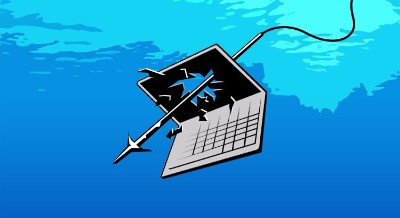Is There Any Way To Protect Yourself From Online Fraud and Identity Theft? – Semalt Gives The Answer

The Internet is full of all kinds of people. There are many people over the web who are spending sleepless nights trying to perform some particular types of internet fraud. There are many forms of internet fraud. Most of the cyber security issues originate from the works of hackers, spammers, and other cyber criminals. The safety of an e-commerce website lies in the hands of the site admin.
Below are some tips offered by Alexander Peresunko, the Semalt Customer Success Manager, that'll help you keep off internet fraud.

1. Learn to identify phishing and spear phishing attempts.
Spear phishing attacks are targeted to try and get additional information from a person because their online account with another organization has been hacked or suffer a data breach. These attacks lure an individual into providing personal information by offering false promises. An individual should give out the minimum information about themselves to companies or business unless the company can explain why it needs the information. Always, a legit company will be able to explain and answer all questions accurately.
2. Use strong and secure passwords.
Using strong passwords that combine letters, special characters, caps, and numbers is one way to defend yourself from internet fraud. However, as much as a password is strong, using the same password on multiple websites compromises the security of your account. LastPass and KeePass are some of the services that help one to create, keep and manage several strong passwords for all the sites he/she visits online.

3. Beware of suspicious emails and attachments.
An individual shouldn't open emails or attachments from untrusted sources. Attention should be paid even to emails and file extension of the attachments from trusted sources before downloading or opening them, especially official looking emails from your bank or credit union asking you to log in and review your account details. The majority of the companies never email a person and ask them to verify their account information. And even when it's legit, it's safer to visit the company's website or call the company rather than clicking on the link provided in the email.
4. Be skeptical, informed and careful.
If anyone asks you for your information and it doesn't feel right, don't do this until you can understand why the person needs the information. Trust your inner instinct. Also, learn to second-guess promotions and offers you see online. Check out their sources. Often most of these messages will have a word "scam". Have time to read The Federal Trade Commission's guidelines on protecting yourself from identity theft and the federal government's tips for avoiding internet fraud at USA.gov. If your identity is stolen already, report identity theft.

5. Use HTTPS everywhere.
By individuals ensuring that they are connected to the sites, they are visiting via SSL is the safest way to ensure one is talking to the legit website and also to make sure communications with the site are encrypted hence protecting you from internet fraud.
6. Keep your anti-malware software updated.
However, viruses and Trojans are not a common problem nowadays; one needs to install an anti-malware software on his or her machine. Also, ensure that the antivirus is kept up to date. An out of date antivirus isn't useful.